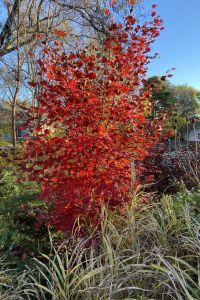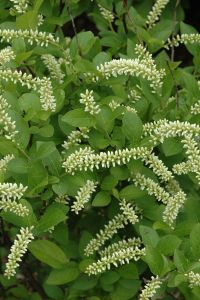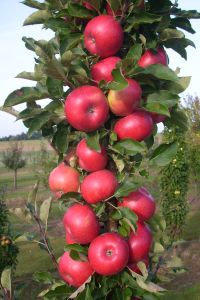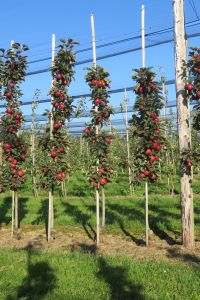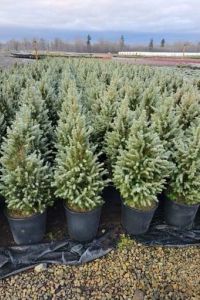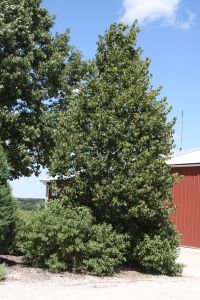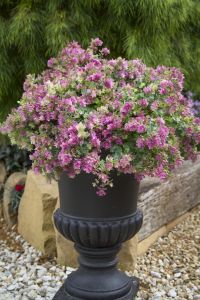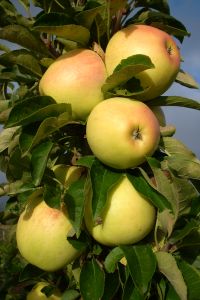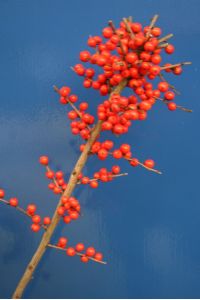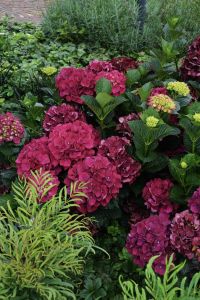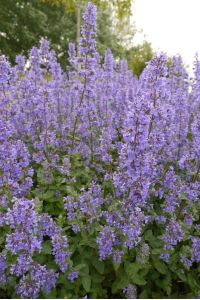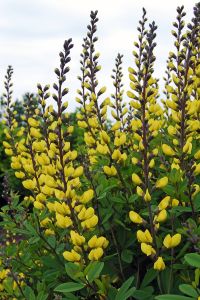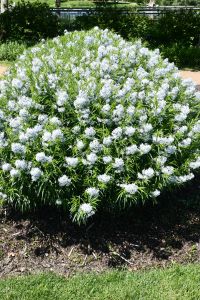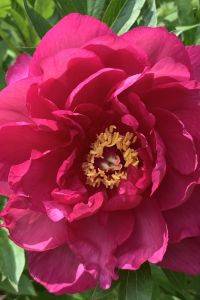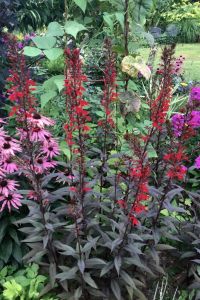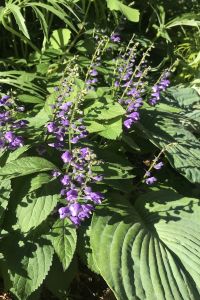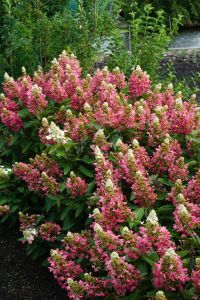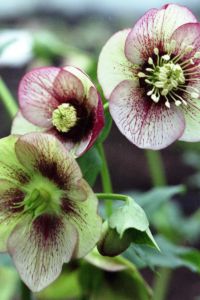Plants Solve Problems
Professional horticulturists turn to plants to do a job or solve a problem. Homeowners and gardeners do the same. Below we have organized our large library of plants into solutions to problems or themes commonly found in home gardens, and public landscapes.
Alkaline Soils
Alkaline soils are usually in the 7.5pH and above range. In the midwest, where most of our Chicagoland Grows® Collection of plants originate, the soil can have a pH of 8 or higher. These plants can handle high pH without damage or leaf yellowing.
Backyard Orchards
These plants are the perfect size for a backyard orchard. Plant them and enjoy tasty Fruit Snacks™ in season!
A FEW SUGGESTIONS . . .
Containers
These plants do well in pots. On your porch and patio, on balconies and as accents around your garden anywhere you need a spot of color.
A FEW SUGGESTIONS . . .
Drought & Dry
Some parts of the world (and your garden) get less rain than others. These plants do well with less rain.
A FEW SUGGESTIONS . . .
Hedges
Good hedges make great neighbors. These plants make great hedges. Trim them to your desired height to block out bad views or set garden boundaries.
A FEW SUGGESTIONS . . .
Matrix
These plants are perfect for palettes of low-growing, low-care, perennials woven together in an artful pattern—or matrix. This is a new type of perennial garden design.
Midwestern Gardens
Midwestern gardens have the best ( or worst) of both worlds: hot, often humid summers and cold, wet winters. Many sites also have very high pH or alkaline soils. Please must withstand harsh extremes, freezing, drying winter winds, and hot, dry summers.
Native
These plants are selections of natives that are indigenous to certain parts of North America, and could possibly be suitable for conservation plantings.
Northern Gardens
Plants that can thrive and survive in northern gardens must not only take the cold, but in some areas, they may have very wet winters, and some may have very cold, but dry winters. Northern gardens occur in many climates. We evaluate for color hardiness, winter bud survival and evergreen leaf retention.
Pollinators
Plants that attract, feed, and house pollinators like bees, butterflies, hummingbirds, birds, wasps, and other beneficial wildlife.
A FEW SUGGESTIONS . . .
Prairie Look
Plants useful for the “new perennial design” concept, focusing on the use of ornamental grasses and late-flowering perennials, to create a naturalistic looking garden.
Small Spaces
Smaller gardens require smaller plants. These plants will not outgrow smaller spots, making them perfect for urban plantings and petite garden spaces.
A FEW SUGGESTIONS . . .
Southern Gardens
It is just as hard for a plant to survive summers and winter wetness in the deep south as it is for plants to survive harsh winters. Nighttime temperatures along the Gulf coast and in other southern regions can reach 90 degrees F, in the heat of the summer, allowing for no reprieve from the high heat and humidity. Winter wetness can also rot root systems and crowns of plants.
Street & Parkway Plantings
Trees that naturally grow to the perfect size and shape for an easy maintenance street or parkway planting are hard to come by. These plants are the best we have for these situations. These are long-term plants that can be planted and enjoyed for a lifetime.
Wet Spaces
Some plants can take more moisture in the soil. These plants are adaptable to moist soil and even soil that drains poorly.
A FEW SUGGESTIONS . . .
Winter Interest
These plants will provide a fourth season of color and texture throughout the cold winter months, with attractive fruits or distinctive shapes or bark.
